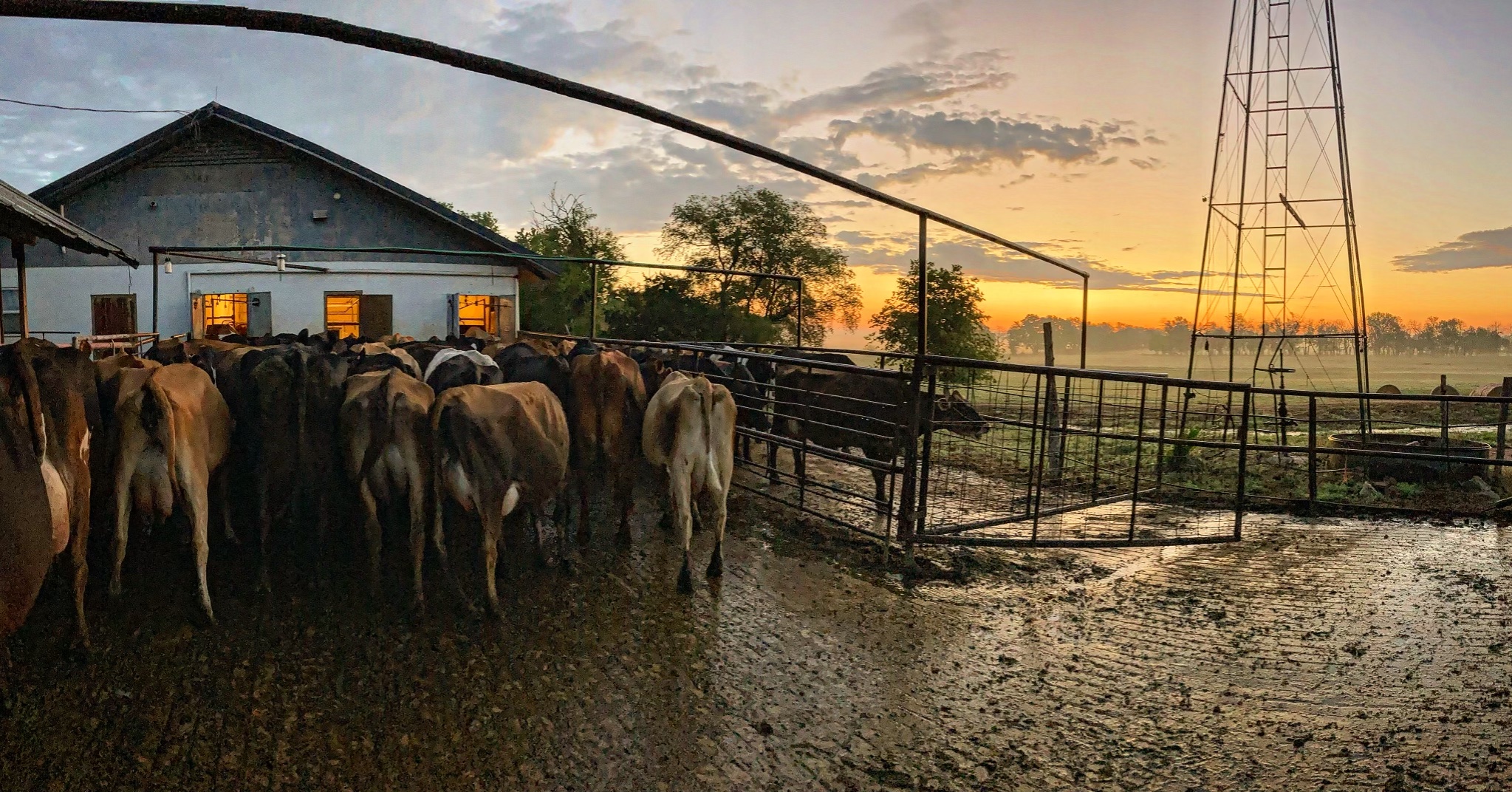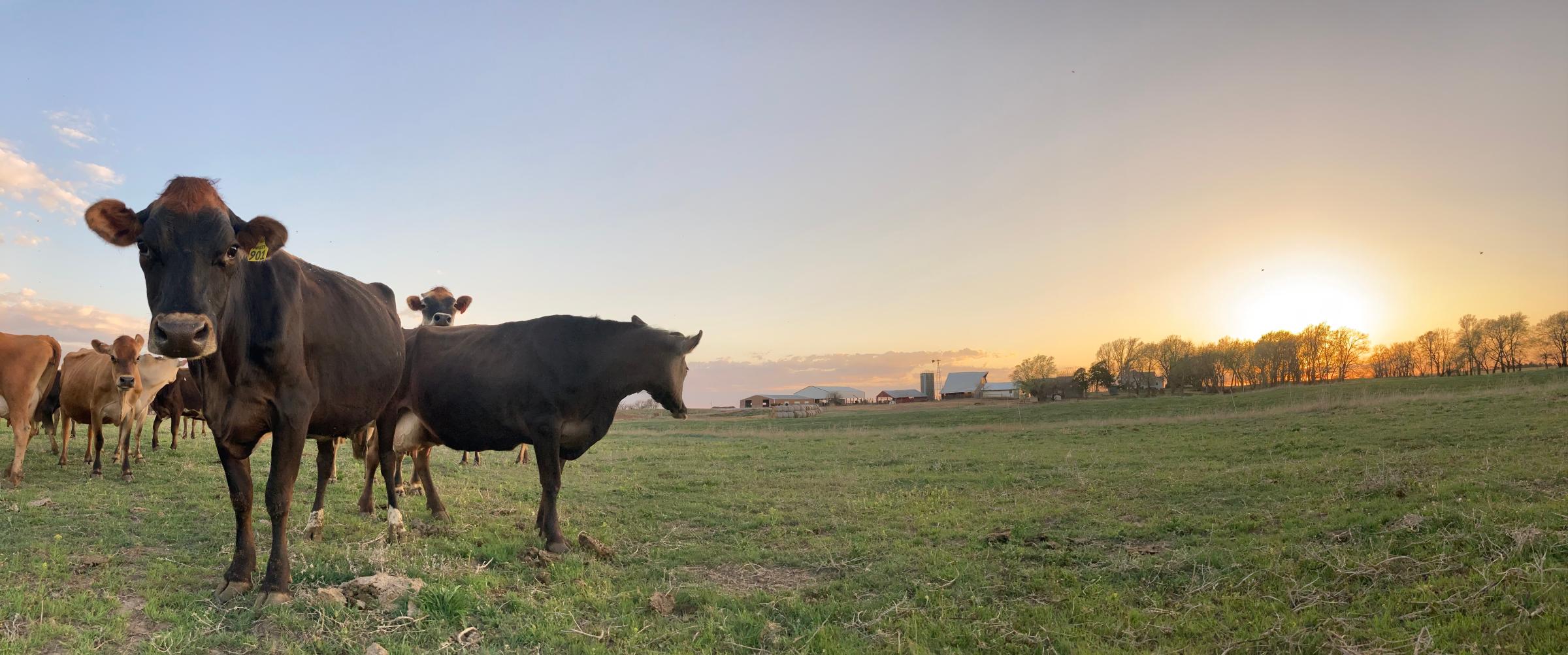
Every morning at 5 a.m., Jason Schmidt, owner of Grazing Plains Farm LLC., a small dairy farm based in Whitewater, Kans., starts his first milking of the day. The 42-year-old fifth generation farmer has been tending to his 70 cows on a daily basis for the past 12 years, but has become increasingly worried about the future of his farm.
His fears of financial stability related to his job are due to extreme weather conditions over the past year that affect his cows’ health and milk production. In the last two weeks alone, heat waves in Kansas brought temperatures in the high 90s and 100s, adding onto the difficulties many Kansas farmers have been facing due to a long lasting drought. The problem extends beyond the U.S., though; this July marked the earth’s hottest month on record.
Extreme weather patterns are posing difficulties across the agricultural community, but especially among small farmers, who have limited funds to deal with inconsistent weather that is affecting their cattle or crops.
Tom Giessel, a 70-year-old farmer who cropshares his land in Larned, Kans., notes that extreme heat and lack of precipitation poses a problem for dryland farmers that depend on rainfall instead of irrigation to tend their land. “When you're solely depending upon what comes from the sky and you get these streaks of five or six months with very little rain, it has a greater impact,” says Geissel.
Farmers, who need to be able to predict and have knowledge about the weather, are now being put in an especially precarious financial position.
“Unfortunately, a lot of people that are on the land and farming are doing their best to stay alive,” says Giessel. “A lot of them don't think too much further than how to get to the next day, and that's a very dangerous place to be in any aspect of our society, in any aspect of any business.”
Central and southern regions of Kansas, where both Schmidt and Giessel are located, currently stand at a D3 level on the drought monitoring scale, meaning that they are in extreme drought conditions.
The effect of weather extremes
That poses a big problem for dairy farmers, whose cattle heavily rely on proper feed and water to produce high levels of milk. “Cows can't sweat heat off so they have a real hard time with heat,” Darren Turley, the executive director of Texas Association of Dairymen, tells TIME. “A dairy cow runs a lot of water through her body to make milk so she needs to drink a lot of water. When you start getting that really high temperature, that inhibits our ability to put that into production.”
While Schmidt says none of his cows have suffered serious illness due to increased temperatures, cows eat less to combat heat stress, meaning his cattle have lost weight and their appetite. Schmidt has seen a decrease in milk production of about 15-20%, which is costly for a farmer with a small, approximately 300-acre property. Nationwide, the dairy industry loses $1,500 million annually due to the heat stress dairy cows face.

Schmidt also heavily relies on rain to help grow pasture and other forms of feed for his cows. But crops like hay and pasture grasses rely on subsoil moisture, which have been the most affected by the drought. Extreme weather also impacts the soil ecosystem—which is full of living organisms and microorganisms that help plants absorb nutrients and grow, says Omanjana Goswami, an interdisciplinary scientist with the Food and Environment Program at the Union of Concerned Scientists.
“When there's an extreme drought, extreme high temperatures, lack of water or even too much [water],” Goswami says, “it can affect the multiple sorts of chemical, physical, and biological activities that go on in the soil that we don't really see with our naked eyes.” Droughts can also cause the soil to release more nitrogen, which later breaks down in nitrous oxide, a more potent greenhouse gas that can warm the atmosphere some 300 times more than carbon dioxide.
Extreme heat and drought combined have caused Giessel to average 11.4 bushels per acre for his winter wheat crop, down from his average yield of 50-70 bushels per acre. Schmidt’s father, who also grows wheat, has also seen some crops grow poorly. He’s allowed his son to harvest those crops as feed for his cows, but Schmidt is still feeling the brunt of the drought. And they're not alone. Exposure to heat has cost the U.S. agriculture sector more than 300 million hours of labor annually since 2012.
“I'm in a pretty discouraged place this year,” Schmidt says. “Milk prices have dropped by 60-70% over last year's prices and crops are half of what that is, feed costs are through the roof, energy costs are through the roof. And so, when all the prices are way up, your crop yields are way down, and your income is way down, how is that gonna work?”
Culture of farming
Aside from the recent heat wave and drought Kansas farmers are confronting, Goswami tells TIME that long term industrial agriculture has also played a role in stripping soils of nutrients and impacted its ability to “adapt to changing conditions.”
Much of that is due to a culture of farming that encourages farmers to “Get big or get out,” as 1970s United States Department of Agriculture Secretary Earl Butz coined it. Consolidation has been a prominent issue in the agricultural industry, as the average crop size has shifted from midsize (between 100 and 999 acres) to large operations (having 2,000 or more acres of land). That means small farmers are increasingly selling their cattle or land if crops have begun to decrease, two known effects of a D3 drought level status in Kansas, according to the U.S. Drought Monitor.
Research shows that dairy farms have been consolidating at a rate faster than any other agricultural sector, as the midpoint herd size has increased from 80 in 1987 to 1,300 in 2017. Turley says that is currently being seen in central Texas, which has been enduring a D3 level drought since last year. “You're seeing farms go ahead and sell [because] in Central Texas, [even] if it rained tomorrow, we would be doing good to get maybe one more partial cutting of grass, which would not sustain you through the winter months,” Turley says. “Because last year was a drought, we fed all the hay we bought…Now there's no reserve. There are not many options…We're seeing various farms go out of business and it's a huge economic impact.”
Fluctuating milk prices and negative net returns for small dairy farmers have impacted people like Schmidt, who feels pressure to expand his business, but says that has become tougher as land prices and general operation costs scale up. “[Dairy farming is] an all consuming lifestyle that for many decades now hasn't produced a huge return on investment and for many years in a row often creates losses,” Schmidt says. “My dream of coming back to the family farm [was to] prove that there is still a way for the small farmer to survive, and I don't know, [I’ve been working for] over a decade and now I'm not so sure.”
Looking forward
In periods of economic hardship, farmers can rely on supplemental programs like crop or milk insurance for financial support. But farmers tell TIME that many of these programs support a culture of overproduction instead of agricultural conservation, which builds the health and quality of the soil. These practices are vital in light of climate change. “There's a kind of an emphasis on an income basis and now the attention turns from the actual commodity or the food you produce to the economic viability of the operation,” Giessel says.
Farmers are looking for broader support in this year’s Farm Bill, which is a package of legislation that sets food policy in the U.S. and is revisited every five years. Much of the money in that bill goes towards food assistance programs, but there is also legislation that decides how much money is allocated towards crop insurance or conservation programs, which teach farmers how to integrate conservation practices on their farms.
Goswami says that these conservation programs help farmers build resilient agricultural systems through crop rotation, encouraging crop diversification, and integrating other practices to improve the condition of the land. These programs have been quite successful, seeing a near four-time return on investment for farmers while also keeping soil healthy.
Giessel says that while he grew up with knowledge about the importance of crop rotation and summer fallow, “which would let the land rest for a year to accumulate more moisture,” farmers don’t subscribe to these types of practices anymore. Part of that is because farmers are looking to produce more to increase their profit as opposed to focusing on soil health. Conservation programs could help teach farmers more about these practices, but they are often oversubscribed and lack funding. In the meantime, farmers like Schmidt say they aren’t sure how far existing insurance programs will adequately support farmers in the future. He says he thinks he’ll make up about 50% of the loss he’s experiencing through milk insurance, but doesn’t believe insurance will keep up with a changing climate, which will cause him and other small farmers to generate more losses.
Efforts towards greater conservation efforts have been boosted by the Inflation Reduction Act, which put some $20 billion towards funding for such programming. But farmers are still watching to ensure that the money is actually going to be put towards conservation.
Regardless, scientists say it is imperative that people begin to take steps towards better farming practices. “Transitioning to more resilient, agricultural practices will take time and effort,” Goswami says. “But we need to ensure that farming systems shift to more resilient food production systems. We have to grow more food [that goes to feed people]. We can't keep growing feed and fuel to withstand the weather whiplash.”
“[Unless] we are able to reach our climate targets,” Goswami says, “we will see these extreme weather events becoming more and more common in even parts of the world where they were not witnessed before.”
More Must-Reads from TIME
- Cybersecurity Experts Are Sounding the Alarm on DOGE
- Meet the 2025 Women of the Year
- The Harsh Truth About Disability Inclusion
- Why Do More Young Adults Have Cancer?
- Colman Domingo Leads With Radical Love
- How to Get Better at Doing Things Alone
- Michelle Zauner Stares Down the Darkness
Contact us at letters@time.com